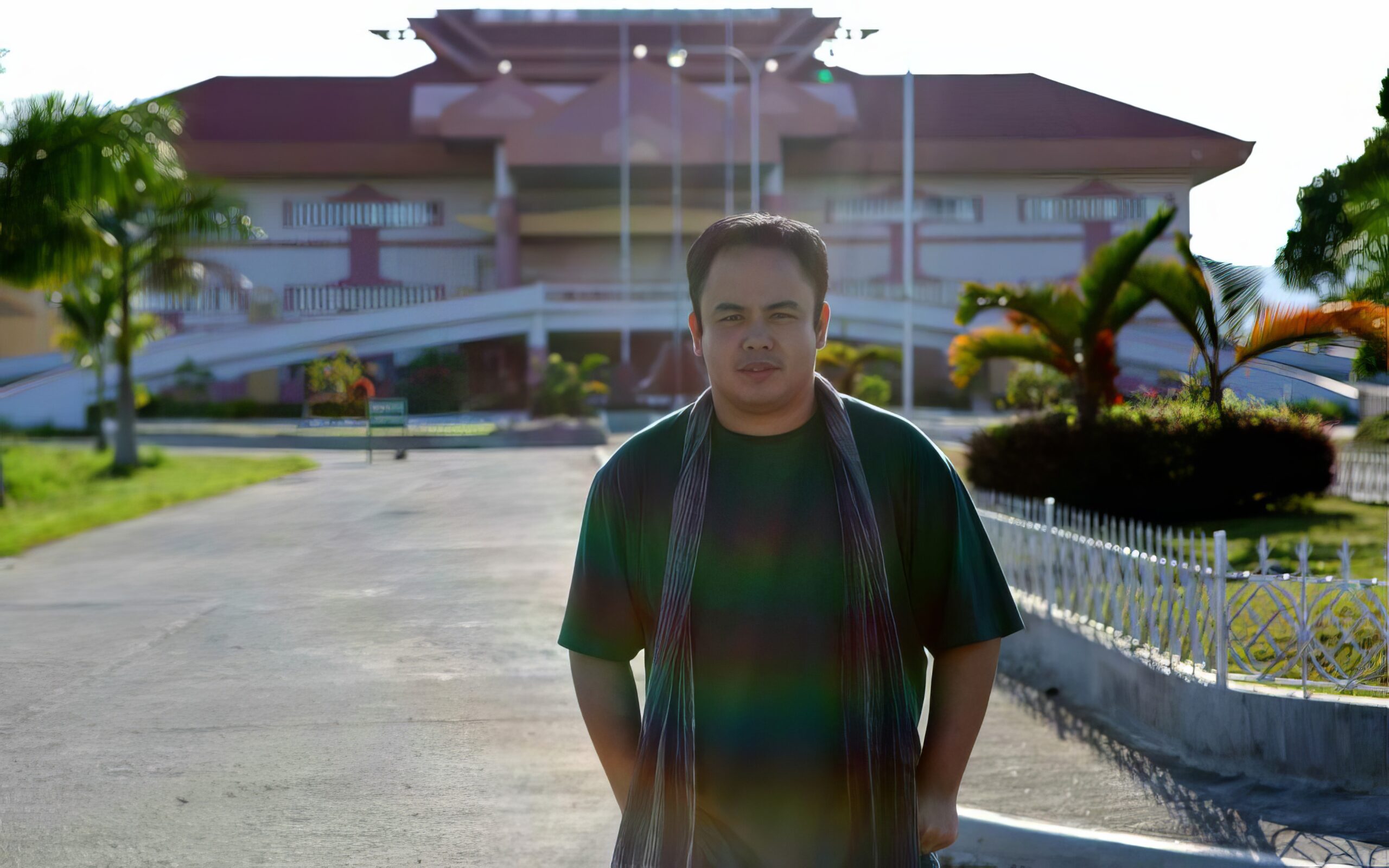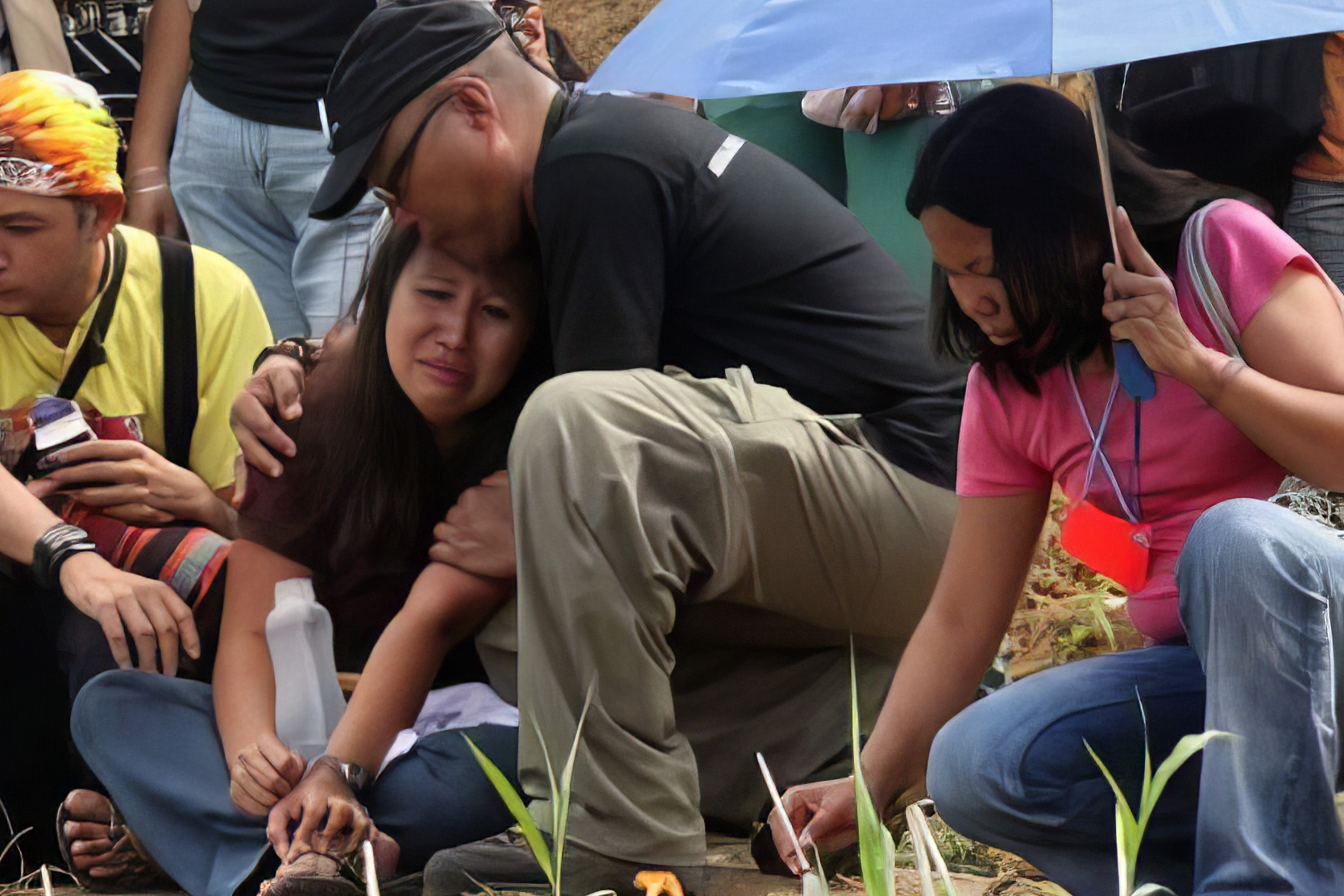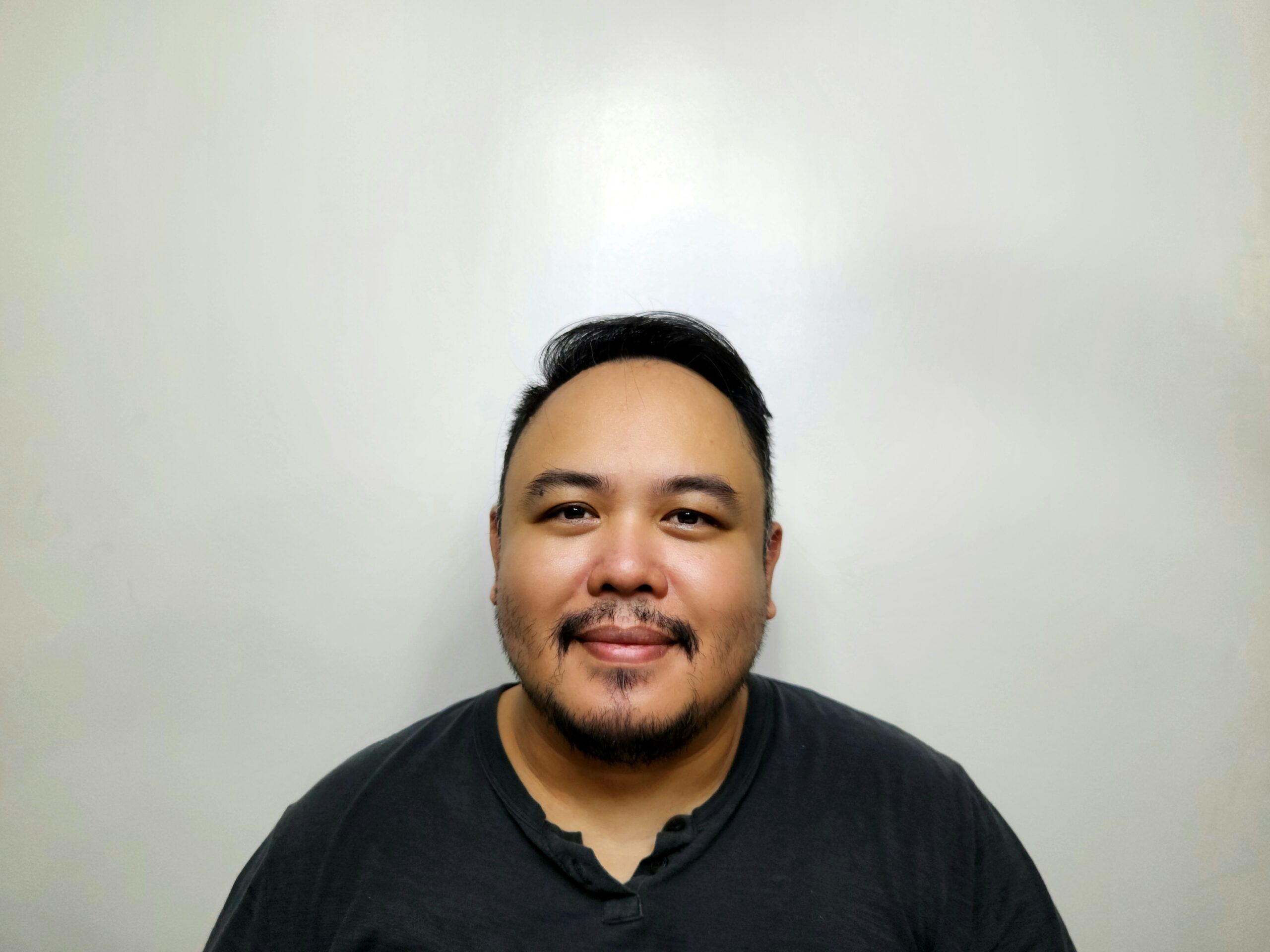
Jaemark Tordecilla stands in front of the Maguindanao provincial capitol in 2011.
I became a journalist in 2009 for one reason: I wanted to focus my work in a field that promoted social justice. Prior to that, I was working in technology, a much more lucrative field given the presence of foreign companies that built their offshore tech operations in the Philippines.
It was an inauspicious time to join the industry. The Committee to Protect Journalists had just named the Philippines among the worst places in the world to be a journalist, primarily due to the unsolved murders of journalists speaking truth to power. Later that year, the Maguindanao massacre happened, claiming the lives of 58 people, including more than 30 media workers, in what remains one of the deadliest events for the press in history. It was perpetrated by the Ampatuan clan, the most powerful political family in the region.
I began my journalism career at the Philippine Center for Investigative Journalism (PCIJ), for which I covered the aftermath of the massacre. My stint at the PCIJ took me around the country, giving me a first-person view of the issues faced by news outlets across the Philippines. Aside from the threat of violence, there was political intimidation and legal harassment from entities seeking to influence coverage or silence critical reporting. There was also constant economic pressure as traditional revenue streams continued to decline, leaving many journalists — especially in the countryside — vulnerable to the temptations of corrupt practices.
Since then, things have only gotten worse. The government has continued to target and harass journalists. The online news site Rappler, founded by Nobel Peace Prize laureate Maria Ressa, was a target during the Duterte administration. In 2020, the country’s biggest media company, ABS-CBN, saw its broadcast license canceled by lawmakers loyal to the president, who had declared the television network an enemy. The threats aren’t always political. In January 2024, CNN Philippines announced its closure after nine years following billions of pesos in mounting losses.
Meanwhile, I had been hired for leadership positions at more mainstream news organizations. In 2014, I became editor-in-chief of GMA News Online. With my background in technology, I spent nearly a decade creating strategies and new journalism platforms that allowed my team to tell stories better and reach new audiences, usually on the latest emerging platforms. We did a lot of longform reporting and digital documentaries, but we also used graphics and animations to tell stories of various lengths. We used augmented-reality filters, TikTok duets, and online games. We’ve also collaborated with influencers. We were even the first media outlet in the world to air our evening news live on TikTok.
Ours became the most trusted news brand in the Philippines, according to the Reuters Institute’s Digital News Report. In 2022, the brand had a trust score of 70% according to the study, even as “trust in news overall” languished at 37% among Filipino respondents. This tracked with our consumption data. GMA News was among the top in the world, often reaching new peaks during moments when Filipinos were most in need of news: lockdown announcements, Covid-19 surges, and elections.
Our analytics told a clear story: Filipinos in the country and abroad were hungry to find sources they could trust. But in a world of endless content, attention is the most important currency, and news organizations are no longer entitled to anything. We all need to fight for that attention every day.
Some days, we win. Any other news organization in the world would be glad to take our numbers.
Some days, we lose. A University of the Philippines study found that because of intense misinformation operations during these past elections, the reach of news outlets for political discourse is “increasingly limited to news-reading publics,” with our gatekeeping function bypassed by politicians and new political actors. Much of our political reporting was not reaching these partisan communities.
Indeed, in the 2022 Philippine national elections, Ferdinand “Bongbong” Marcos, Jr., the son and namesake of the late dictator, won the presidency in a landslide without taking a single critical question from the biggest news organization in the Philippines.
Despite this, mainstream newsrooms in Manila remain in a relatively privileged position. Many journalists working for alternative news organizations, usually in the countryside, often face more immediate and existential threats.
Journalists like Frenchie Mae Cumpio, a regional journalist who has been accused by the government of being a rebel operative. She’s currently in jail over trumped up firearms charges.
Another journalist, Lady Ann Salem, spent a year in jail. After her release, authorities went to the appeals court to try to overturn her acquittal. Then there’s Juan Jumalon, aka DJ Johnny Walker, a radio broadcaster who was shot dead during a live broadcast.
The Philippines continues to be one of the worst places in the world to be a journalist. The fight is exhausting, and it’s easy to feel helpless. But it’s necessary.

Raymund B. Villanueva
I recently reached out to Nenen Momay-Castillo, a Filipino nurse who I met while covering the aftermath of the Maguindanao massacre. Her father Reynaldo “Bebot” Momay, a photojournalist, was among those murdered. But his body was never found, so for a while, Castillo couldn’t file a case against the murderers.
Despite that, she took a leadership role in organizing the families. She was always quick to make things light, always ready with a joke and a smile. She told me she does this advocacy because otherwise, she’d just be crying all the time.
The courts found the Ampatuans and their men guilty in 2019 on some charges relating to the massacre, but they were acquitted in the Momay case because his body was never proven to be there — all that was found were his dentures.
Castillo left the Philippines to work in the United States as a nurse, but she’s still seeking justice. I reached out to her before Thanksgiving; I almost didn’t realize that it was the anniversary of the massacre. She was glad to hear from me. I asked her about her kids, whom I had interviewed before, and she sent me a picture of their happy family.
She told me she couldn’t thank us enough for the work we did as she sought justice for her father. And I was thinking, I wasn’t able to do anything. But God bless her for believing that our work makes an impact, because if she believes it, then how could I possibly not?


